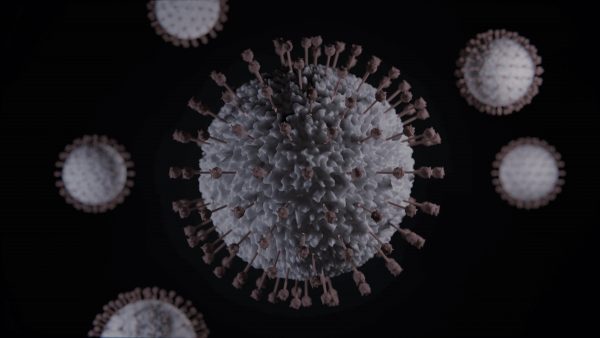CONSPIRACIES AND ‘COUNTERSPEECH’
12 July 2021
‘The 2020 US election was stolen.’ ‘COVID-19 was intentionally developed as a biological weapon.’ ‘Climate change is a hoax invented by the Chinese.’ The times have been good for conspiracy theories. This, in turn, is dangerous. As these examples illustrate, conspiracy theories often sow confusion or scepticism about crucially important matters—matters such as the democratic process, public health crises, or even existentially threatening environmental disasters.
What should we do about this? The standard response is to counter conspiracy theories with more speech. It is, in other words, to use ‘counterspeech.’ If conspiracy theories spread falsehoods, then the solution, on the face of it, is speech that tackles these falsehoods and asserts, clearly and unambiguously, that they are false. This is the natural impulse behind the practice of fact-checking, which has proliferated in step with conspiracy theories.
Yet, for all its intuitive appeal, the idea of counterspeech seems, to many, to be hopelessly naïve. At the heart of this concern is salience. When fact-checkers pick out a conspiracy theory, and debunk it, they typically contribute to making it more visible. Many people never considered the possibility that COVID-19 could be a biological weapon before seeing the claim debunked by countless fact-checkers. In cases such as these, counterspeech inadvertently highlights conspiracy theories, and makes them more salient to us.
Why does salience matter? There are at least three reasons. The first has to do with familiarity. Cognitive scientists have shown that the more familiar (or ‘fluent’) a claim seems to us, the more likely we are to believe it is true. The problem for counterspeech is clear. Insofar as it draws our attention to conspiracy theories, it risks making them more familiar to us—and so, more likely to be believed.
The second problem concerns disagreement. If a claim is salient in public discourse, this creates the appearance of disagreement. After all, why would we be debating it, if everyone agreed? Accordingly, if counterspeech makes a conspiracy theory very salient, by repeatedly contesting it, then it might seem as though there is significant disagreement about it. That, in turn, risks giving the impression that the issue at hand is uncertain, unsettled. So, by increasing the salience of its target, counterspeech may unwittingly imply that the truth of the matter is more uncertain than it actually is.
The final problem relates to attention. There are only so many things that we can pay attention to—and there are even fewer things we can pay attention to in politics, after we’re done working, cooking, and hanging laundry up to dry. It’s concerning, therefore, if counterspeech increases the salience of a conspiracy theory: irrespective of whether we end up believing it, its salience means that it takes up cognitive space—and so, it distracts from real and pressing political issues.
If counterspeech faces these problems, does that mean we should abandon it? The main alternative would be to take legal action—that is, to ban dangerous conspiracy theories. But liberal democracies have been hesitant to take this approach. Partly, the problem is about governmental overreach: if the state has this power, can it be trusted only to prohibit unfounded conspiracy theories? This is of course a general problem with restricting speech. Yet it’s especially acute with conspiracy theories, because these often masquerade as legitimate political discourse. There have been political conspiracies in the past, and speech denouncing them has a valuable role to play. So any restrictions would have to make a delicate distinction between legitimate and illegitimate conspiracy theorising.
But even if we can overcome these worries about overreach, the main problem is really underreach. If the case of hate speech is anything to go by, legal restrictions will not suppress all dangerous conspiracy theories. So, even if we implement restrictions, we will still need to counter conspiracy theories that slip through the cracks. Here, counterspeech remains the main option at our disposal. The solution therefore cannot be to jettison counterspeech. Rather, it is to reconsider the form counterspeech should take, if it is to avoid, or at least alleviate, problems of salience.
There are two suggestions here. The first is to think of counterspeech as a pre-emptive tool. Counterspeech needn’t always respond to conspiracy theories after the fact. It can also ‘inoculate’ the public against future conspiracy theories, so that future theories cannot take root and become salient to begin with. One way to do this would be to use public discourse to warn citizens about untrustworthy sources, and to teach citizens how to recognise them.
Pre-emption, however, is a long-term strategy. In the short term, it’s often too late for pre-emption: many conspiracy theories have already taken root, and are already salient. To deal with this immediate problem, the second proposal is for counterspeech to take a positive form. Fact-checking is negative: it cites and then negates conspiracy theories. By contrast, positive counterspeech focuses on putting forward a true narrative, one that is inconsistent with—but does not explicitly repeat—the false theory. Crudely put, we should not say: ‘No, COVID-19 is not a biological weapon.’ Instead, we should focus on highlighting how COVID-19 did emerge. Positive counterspeech thus opposes conspiracy theories, but without reinforcing their salience. It draws attention away from the false theory, by making the true, positive, account salient instead.
This is not easy to achieve. Part of the power of conspiracy theories lies in the fact that they are designed to grab our attention: they are exciting, sensational, and utterly fascinating. They are meant to become salient, and remain that way. The upshot is that, so, too, should our positive accounts be. The true account of how COVID-19 emerged should be reported in an exciting, sensational, and utterly fascinating way. Counterspeech must be grounded in science and expertise. But it should be framed using the gripping language and imagery of novelists and poets. Successful counterspeech doesn’t just require us to be right. It requires us to be creative, too.
- October 2025
- September 2025
- August 2025
- July 2025
- June 2025
- May 2025
- April 2025
- March 2025
- February 2025
- January 2025
- December 2024
- November 2024
- October 2024
- September 2024
- August 2024
- July 2024
- June 2024
- May 2024
- April 2024
- March 2024
- February 2024
- January 2024
- December 2023
- November 2023
- October 2023
- September 2023
- August 2023
- July 2023
- June 2023
- May 2023
- April 2023
- March 2023
- February 2023
- January 2023
- December 2022
- November 2022
- October 2022
- September 2022
- August 2022
- July 2022
- June 2022
- May 2022
- April 2022
- March 2022
- February 2022
- January 2022
- December 2021
- November 2021
- October 2021
- September 2021
- August 2021
- July 2021
- June 2021
- May 2021
- April 2021
- March 2021
- February 2021
- January 2021
- December 2020
- November 2020
- October 2020
- September 2020
- August 2020
- July 2020
- June 2020
- May 2020
- April 2020
- March 2020
- February 2020
- January 2020
- December 2019
- November 2019
- October 2019
- September 2019
- August 2019
- July 2019
- June 2019
- May 2019
- April 2019
- March 2019
- February 2019
- January 2019
- December 2018
- November 2018
- October 2018
- September 2018
- August 2018
- July 2018
- June 2018
- May 2018
- April 2018
- March 2018
- February 2018
- January 2018
- December 2017
- November 2017
- October 2017
- September 2017
- August 2017
- July 2017
- June 2017
- May 2017

